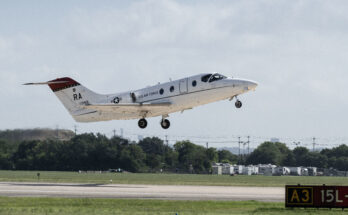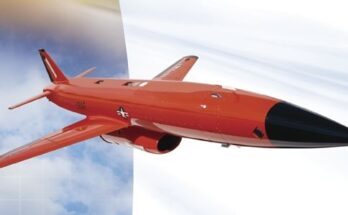
As demonstrated in news reporting, on an almost daily basis, advanced battlefield surveillance systems are indispensable in not only maintaining critical tracking information and situational awareness but also in providing after-action proof of decisive military actions and their consequences. One of these highly utilized sensors is the AAS-52 Multispectral Targeting System (MTS).
The AAS-52 MTS’s turreted, forward-looking pod combines multiple sensors, equipping aerial platforms with an electro-optical (EO) and infrared (IR) full-motion video camera system that permits long-range surveillance and high-altitude acquisition, tracking, and laser designation.
Variants of the MTS should see steady production over the next several years for multiple applications worldwide. Along with various unmanned air vehicle types such as the Reaper and Predator, the systems are also in use aboard U.S. MH-60 Sierra multi-mission combat helicopters and AC-130U Spectre gunships, among many other platforms.
In January 2020, prime contractor Raytheon reported selling $120 million worth of MTS variants to various U.S. government customers in 2019 alone.
Frequently included in purchases of U.S.-produced aircraft and equipment through the Foreign Military Sales (FMS) program, the system fulfills a steady, international demand. In September 2020, the U.S. State Department approved an FMS to France of four AE-2100D turboprop engines and other technology, including the MTS-A, for an estimated cost of $350 million.
Once deployed, keeping these systems in working order and fully upgraded is also a going concern. In October 2022, Raytheon was awarded a $25.4 million contract for engineering services in support of life-cycle sustainment of the sensors. These services included spare parts support, platform integration support, test equipment support and, and software/firmware updates.
While production for the United States will continue to dominate, a significant number of MTS systems will also likely continue to be produced for Australia, Italy, and the U.K., among others.
Andrew Dardine is lead analyst for Forecast International's Defense Electronic Systems group. He is the primary author of Forecast International's Electronic Warfare Forecast and co-author of Electro-Optical Systems Forecast and C4I Forecast. Andrew is also a regular contributor to FI's Defense & Security Monitor blog, offering insights into developing technologies such as directed-energy and next-generation jamming systems. His analysis of such vital market areas as EO/IR systems and electronic countermeasures technology has been cited in Defense News, Aerospace Daily, and Bloomberg Businessweek, among other news media. He has also written about the electronic defense market for Aviation Week and the Journal of Electronic Defense.




